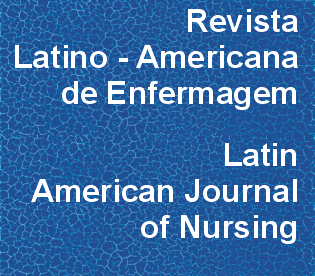RTOG criteria to evaluate acute skin reaction and its risk factors in patients with breast cancer submitted to radiotherapy
DOI:
https://doi.org/10.1590/S0104-11692008000500008Keywords:
radiotherapy, oncologic nursing, radiodermatitis, breast neoplasmsAbstract
PURPOSE: Evaluate and classify skin reactions through the Radiation Therapy Oncology Group (RTOG) criteria and characterize factors that can intervene in these reactions. METHOD: Prospective study, with 86 women submitted to adjuvant breast radiotherapy with a total dose of 5040cGy, in a 6 MeV Linear Accelerator. Personal data were collected and breast size was measured (distance between field separation and breast height). The treated skin area was evaluated weekly. RESULTS: Breast height and treatment technique were significant factors in the univariate analysis for the incidence of degree 3 skin reactions. However, only breast height was a significant factor in the multivariate analysis for the severity of skin reactions. The chances of occurring degree 3 reactions increase 2.61 times for each increase in height unit (cm). These findings allow nurses to plan more adequate and individualized procedures for each patient and contribute to the optimization of treatment.Downloads
Download data is not yet available.
Downloads
Published
2008-10-01
Issue
Section
Original Articles
License
RLAE’s authorship concept is based on the substantial contribution by each of the individuals listed as authors, mainly in terms of conceiving and planning the research project, collecting or analyzing and interpreting data, writing and critical review. Indication of authors’ names under the article title is limited to six. If more, authors are listed on the online submission form under Acknowledgements. The possibility of including more than six authors will only be examined on multicenter studies, considering the explanations presented by the authors.Including names of authors whose contribution does not fit into the above criteria cannot be justified. Those names can be included in the Acknowledgements section.
Authors are fully responsible for the concepts disseminated in their manuscripts, which do not necessarily reflect the editors’ and editorial board’s opinion.
How to Cite
RTOG criteria to evaluate acute skin reaction and its risk factors in patients with breast cancer submitted to radiotherapy. (2008). Revista Latino-Americana De Enfermagem, 16(5), 844-849. https://doi.org/10.1590/S0104-11692008000500008



